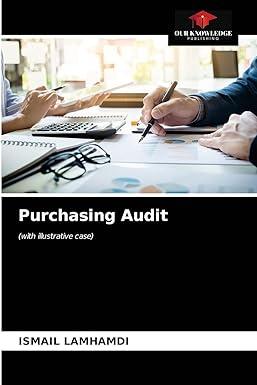Question
Roseville, a small town in Indiana, had the following transactions for the fiscal year ended June 30, 2015. Prepare the General Fund journal entry for
Roseville, a small town in Indiana, had the following transactions for the fiscal year ended June 30, 2015.
Prepare the General Fund journal entry for each transaction.
For each transaction, note if another fund is involved and which fund it would be.
Prepare a Statement of Revenues, Expenditures and Changes in Fund Balances for the year. The beginning fund balances totaled $152,000.
Prepare the closing entries.
The annual budget for the General Fund was approved by city council. Estimated revenues were $1,700,000; approved amounts were as follows: expenditures $1,200,000 and transfers out $120,000.
Property tax bills totaling $1,300,000 were sent out. The treasurer expects to collect all but 3% of these taxes during the year. It is expected that $40,000 will be collected after June 30, 2015, but within the 60-day window.
Two new police cars were ordered. It is estimated that the cost of the cars will be $110,000.
$50,000 was transferred to the Debt Service fund to make a bond payment. $40,000 of this payment will apply to principal, the remaining $10,000 is interest.
The new police cars are received and the actual price was $112,000. Payment has not yet been made.
An old police car was sold for $10,000.
Property taxes of $1,200,000 were collected.
The city's payroll was $500,000. All was paid before June 30.
The water bill from the city's utility enterprise fund was $30,000 during the year. $2,000 remains unpaid at June 30.
The city sent the annual $70 000 subsidy to the recreation enterprise fund. The recreation facility is open to residents and charges fees for those services.
The city purchased supplies costing $60,000. At the end of the year, $5,000 remained on hand. Roseville uses the consumption method to account for supplies.
During the year, the city issued purchase orders totaling $520,000. Goods have been received for $495,000 of those orders; however, the actual cost of those goods was $502,000.
Fines and license fees of $398,000 were collected throughout the year.
The city borrowed $100,000 on a 30-day tax anticipation note.
Step by Step Solution
There are 3 Steps involved in it
Step: 1

Get Instant Access to Expert-Tailored Solutions
See step-by-step solutions with expert insights and AI powered tools for academic success
Step: 2

Step: 3

Ace Your Homework with AI
Get the answers you need in no time with our AI-driven, step-by-step assistance
Get Started


